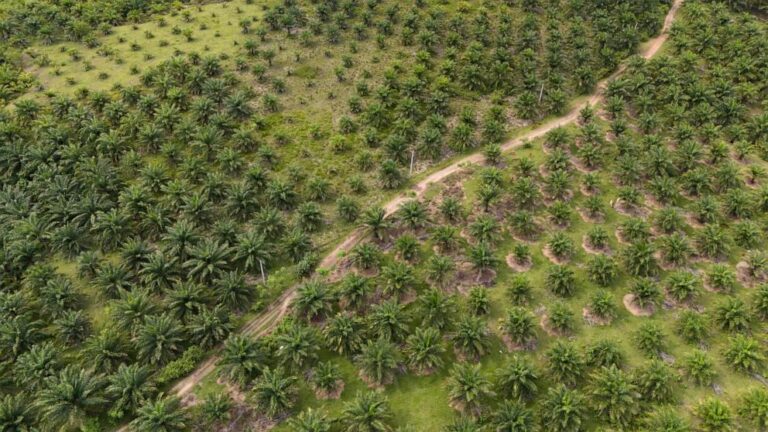Vast swathes of Indonesia’s ancient forests remain unexploited for years after being cut down
Jakarta, Indonesia – Years after they were cut down, vast tracts of Indonesia’s old-growth forests are left to rot. And when the land is finally harvested, it’s often for new oil palm plantations, according to a study published in the Proceedings of the National Academy of Sciences.
But some experts — including the study’s authors — are hoping for a silver lining: the opportunity for Indonesia to expand its agricultural, palm, pulp and other commodity operations without having to cut down more trees, meeting growing demand from businesses and governments for products that don’t rely on deforestation.
“There may be hope that if the country can focus on these undeveloped, unforested lands … they could potentially bring deforestation down to zero, and still have a lot of opportunities for economic development,” said Diana Parker, a postdoctoral associate in the University of Maryland’s Department of Geographic Sciences and lead author of the study.
A vast tropical archipelago stretching across the equator, Indonesia is home to the world’s third-largest rainforest, with a wide variety of endangered animal and plant species, including orangutans, elephants and giant forest flowers. Some of them live nowhere else.
Indonesia is the world’s largest producer of palm oil, a vegetable oil used for cooking and as an ingredient in many foods and hundreds of everyday products. Indonesia also has the world’s largest reserves of nickel, a key material for electric vehicles, solar panels and other goods needed for the green energy transition.
Since 1950, more than 74 million hectares (285,715 square miles) of Indonesian rainforest – an area twice the size of Germany – have been logged, burned or degraded for the development of palm oil, paper and rubber plantations, the extraction of nickel and other raw materials, according to Global Forest Watch.
Additionally, about 25% of its old-growth forests – which are typically rich in stored carbon and biodiversity – have been cut down since 1990, according to the study, which focused on Indonesian deforestation from 1991 to 2020.
Despite a spike in 2023, deforestation has generally slowed in recent years from the record rates of recent decades, Parker said. While 8.8 million hectares (33,977 square miles) of deforested land in Indonesia remains vacant, 7.8 million hectares (30,116 square miles) have been converted to oil palm plantations since 2020, the report said.
“Approximately 80 percent of the undeveloped land converted to productive plantations has been mechanically cleared,” Parker wrote in a press release. “This means that the true environmental impact of palm oil is likely much greater than the area planted immediately after the forest was lost, and is potentially greater than the total deforested area currently planted with oil palm.”
Indonesia’s Ministry of Environment and Forestry declined to comment when contacted by AP.
Experts have lamented the clearing that has led to wasteland, but some wonder whether it could end up being a boon for Indonesia as it battles governments and companies seeking to eliminate deforestation from commodity supply chains.
For example, under the European Union’s deforestation policy, which is due to be implemented later this year and is strongly contested by the Indonesian government, certain products, including palm oil, cannot be imported into the EU if they were produced on land deforested after 2020.
“The fact that Indonesia has so much uncultivated land today means that the country could, if managed properly, increase its agricultural production, for a variety of products, without destroying more forests,” said David Gaveau, an environmental scientist and founder of The TreeMap, which tracks environmental degradation. “Let’s use this land for agriculture rather than converting new forests.”
___
Associated Press coverage of climate and environment issues receives support from several private foundations. Learn more about the AP’s climate initiative here. The AP is solely responsible for all content.


